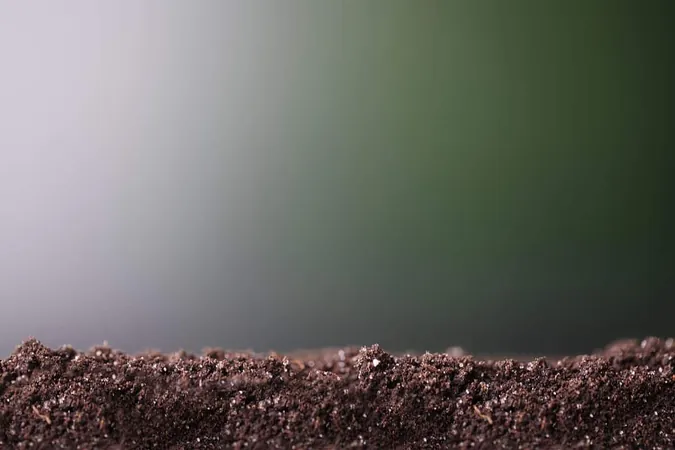
Discover the Astonishing Microbial Life Deep Beneath Our Feet!
2025-04-12
Author: Ming
A Groundbreaking Discovery of "Living Skin" Under Earth's Surface
In a stunning revelation, scientists have unearthed a completely new phylum of microbes thriving in the depths of the Earth's Critical Zone—a little-explored realm that flows with life beneath our feet! Far from being mere remnants, these microorganisms are active players in a complex underground world, offering insight into ecosystems, nutrient cycling, and the future of biotechnology!
Exploring the Critical Zone: Earth's "Living Skin"
The Critical Zone, often dubbed Earth’s living skin, stretches from the treetops down to depths exceeding 200 meters. This crucial layer is responsible for life-sustaining functions, including water filtration and soil formation. Yet, much of this zone, especially its deeper layers, remains a mystery.
In an exciting study from Michigan State University led by microbiologist James Tiedje, researchers ventured into Iowa and China, collecting soil samples from depths of up to 21 meters. These locations were chosen for their thick, fertile soils—ideal for investigating microbial life seldom seen by sunlight!
Meet the Remarkable CSP1-3 Microbial Phylum!
The study revealed a brand-new microbial phylum, charmingly named CSP1-3. What’s fascinating is its overwhelming presence in the lower soil layers—comprising over half the microbial community in some samples! This level of dominance is something scientists rarely observe in surface soils.
"Most people would assume these organisms are just dormant spores," Tiedje remarked. "However, our genetic research shows that these microbes are indeed active and slowly thriving in their unique environment." The DNA analysis hints that these microbes may hail from ancestors once found in hot springs and freshwater, before descending into the enigmatic dark forest of the Critical Zone.
Survival Strategies in the Subterranean World
CSP1-3 members appear to be slow-growing mixotrophs, adept at pulling nutrients from their surroundings while also generating energy through various biochemical means. "All deep soil lineages likely follow this mixotrophic lifestyle," the study notes. These organisms can produce trehalose—an energy-efficient compound—that aids their survival in resource-scarce conditions.
Impressively, they employ unique methods for energy maximization, such as trace gas oxidation and heterotrophic fermentation. One of their standout features includes the oxidation of aerobic carbon monoxide, which enables them to persevere in low-nutrient and low-oxygen settings. "Over time, these microbes have adapted to their challenging underground habitats," Tiedje elaborated.
Potential Breakthroughs for Science and Technology!
The CSP1-3 phylum may hold the keys to groundbreaking advancements in bioremediation, biotechnology, and pharmaceuticals. "Its unique physiology, influenced by complex biochemistry, might reveal valuable genetic traits for tackling environmental challenges," Tiedje suggested. "If we could harness their abilities to metabolize tough pollutants, we might just find solutions to some of Earth’s biggest environmental dilemmas!"



 Brasil (PT)
Brasil (PT)
 Canada (EN)
Canada (EN)
 Chile (ES)
Chile (ES)
 Česko (CS)
Česko (CS)
 대한민국 (KO)
대한민국 (KO)
 España (ES)
España (ES)
 France (FR)
France (FR)
 Hong Kong (EN)
Hong Kong (EN)
 Italia (IT)
Italia (IT)
 日本 (JA)
日本 (JA)
 Magyarország (HU)
Magyarország (HU)
 Norge (NO)
Norge (NO)
 Polska (PL)
Polska (PL)
 Schweiz (DE)
Schweiz (DE)
 Singapore (EN)
Singapore (EN)
 Sverige (SV)
Sverige (SV)
 Suomi (FI)
Suomi (FI)
 Türkiye (TR)
Türkiye (TR)
 الإمارات العربية المتحدة (AR)
الإمارات العربية المتحدة (AR)